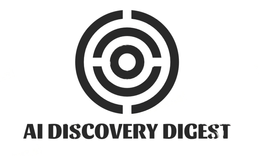Welcome to the future of farming! In an era where technological advancements are transforming every industry, it’s no surprise that agriculture is embracing artificial intelligence (AI) with open arms. Gone are the days of traditional manual labor and guesswork; today, farmers have access to cutting-edge AI technology that is revolutionizing the way they operate.
Imagine a world where farm equipment can think for itself, making decisions based on real-time data and optimizing productivity like never before. From autonomous tractors to smart sensors, AI has paved the way for automation and efficiency in farming practices. In this blog post, we will explore how AI is being used in farms across the globe, examine successful case studies, discuss challenges faced by this technology, and ultimately understand its impact on the future of agriculture.
Types of AI Technology Used in Farming
AI technology has revolutionized the farming industry, bringing increased automation and efficiency to agricultural practices. There are various types of AI technologies that are being used in farming today, each serving a specific purpose.
One type of AI technology used in farming is computer vision. This involves using cameras or sensors to capture images of crops or livestock and then analyzing these images to gather valuable data. For example, computer vision can be used to detect diseases or pests on plants, allowing farmers to take immediate action to prevent further damage.
Another type of AI technology utilized in agriculture is machine learning. This involves training algorithms with large amounts of data so they can make predictions or decisions based on patterns and trends. Machine learning algorithms can be used for tasks such as predicting crop yields, optimizing irrigation schedules, or even controlling autonomous farm equipment.
Robotics is another area where AI is making significant strides in farming. Autonomous robots equipped with advanced sensors and algorithms can perform tasks like planting seeds, harvesting crops, or removing weeds without human intervention. These robots not only increase efficiency but also reduce labor costs for farmers.
Drones have also become an essential tool in modern agriculture thanks to AI technology. Equipped with high-resolution cameras and specialized software, drones can capture aerial imagery of fields and analyze it for various purposes such as monitoring soil health, detecting crop stress levels, or assessing irrigation needs.
There’s the Internet of Things (IoT), which connects physical devices embedded with sensors and software to collect and exchange data over the internet. In farming applications, IoT allows farmers to monitor environmental conditions such as temperature, humidity levels or soil moisture remotely through interconnected smart devices.
The use of AI technology in farming holds immense potential for increasing productivity while reducing resource wastage. With computer vision, machine learning, robotics, drones, and IoT all contributing their unique capabilities, farmers now have powerful tools at their disposal to optimize their operations and make informed decisions to ensure sustainable and efficient agricultural practices.
Case Studies: Successful Implementation of AI in Farms
1. Autonomous Harvesting Robots:
One remarkable case study involves the use of autonomous harvesting robots on a vegetable farm. These intelligent machines are equipped with advanced computer vision and machine learning algorithms, allowing them to identify ripe produce and harvest it with precision. By automating this time-consuming task, farmers have reported significant increases in efficiency and productivity. The robots can work day and night, regardless of weather conditions, ensuring a continuous supply of fresh vegetables.
2. Smart Irrigation Systems:
Another successful implementation of AI in farming is the development of smart irrigation systems that utilize real-time data to optimize water usage. In one particular case study, a vineyard used sensors placed throughout the field to monitor soil moisture levels, weather patterns, and plant health indicators such as leaf temperature. This information was then analyzed by an AI algorithm which determined the precise amount of water needed for each section of the vineyard. As a result, water consumption was reduced by 30% while maintaining optimal crop growth.
3. Disease Detection through Image Analysis:
AI has also been harnessed for disease detection in crops using image analysis techniques. In one instance, an orchard implemented an AI-powered camera system to capture images of fruit trees on a regular basis. The images were then processed using deep learning algorithms that could detect subtle signs of diseases or pests before they became visible to human eyesight. Early detection allowed farmers to take swift action in treating affected trees and preventing further spread across their orchard.
4 . Precision Livestock Farming:
Precision livestock farming is another area where AI has shown promising results. For example, dairy farms have successfully integrated milking robots that use AI algorithms to analyze individual cow behavior and determine the best times for milking based on each cow’s specific needs rather than following rigid schedules like traditional methods.
Challenges and Limitations of AI in Farming
Implementing AI technology in farming has undoubtedly revolutionized the industry, but it is not without its challenges and limitations. One major challenge is cost. The initial investment required to adopt AI technologies can be significant for farmers, especially smaller-scale operations with limited budgets.
Another challenge lies in data collection and management. While AI relies heavily on accurate data, there may be issues with accessing real-time information from sensors or integrating existing farm data systems with AI algorithms. This can hinder the effectiveness of the technology and limit its potential benefits.
There are concerns surrounding privacy and security when it comes to collecting and analyzing sensitive farm data. Farmers must ensure that their data remains secure from unauthorized access or misuse by third parties.
There is a lack of trust among some farmers towards new technologies like AI due to unfamiliarity or skepticism about its capabilities. Education and awareness programs are essential to address this issue and help farmers understand the practical applications and advantages of incorporating AI into their farming practices.
While AI can automate certain tasks, it cannot replace human intuition entirely. Farmers still need to rely on their expertise to make critical decisions based on factors that may not be captured by algorithms alone.
Conclusion
AI technology is revolutionizing the agricultural industry, bringing automation and efficiency to farm equipment. From autonomous tractors to precision agriculture systems, AI has shown great potential in improving crop yields, reducing costs, and optimizing resource management.
Through the use of machine learning algorithms and sophisticated sensors, farmers can make data-driven decisions that lead to more productive and sustainable farming practices. By analyzing weather patterns, soil conditions, crop health indicators, and market trends in real-time, AI-powered farm equipment allows for precise actions like targeted pesticide application or irrigation adjustments.
The successful implementation of AI in farming can be seen through various case studies. For instance, Blue River Technology’s “See & Spray” system uses computer vision algorithms to identify weeds in crops and selectively apply herbicides with incredible accuracy. This not only minimizes chemical usage but also reduces labor costs associated with manual weed control.
It is important to acknowledge the challenges and limitations of AI in farming as well. The initial investment cost for implementing AI technologies may be a barrier for some farmers who operate on smaller scales. Additionally, there are concerns about data privacy and ownership when integrating AI into farm operations.
Despite these challenges, the benefits of using AI technology in farm equipment cannot be ignored. As demands for food production increase due to population growth and climate change impacts on agriculture become more pronounced; leveraging artificial intelligence will become crucial in ensuring efficient resource utilization while minimizing environmental impact.


